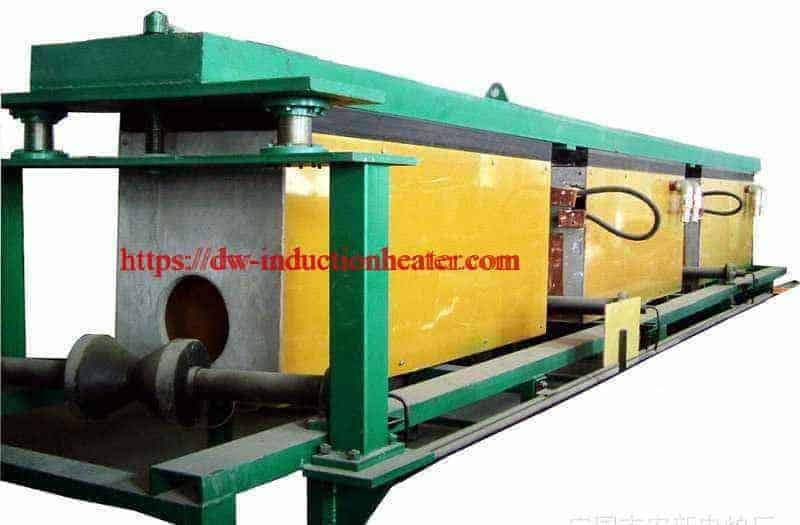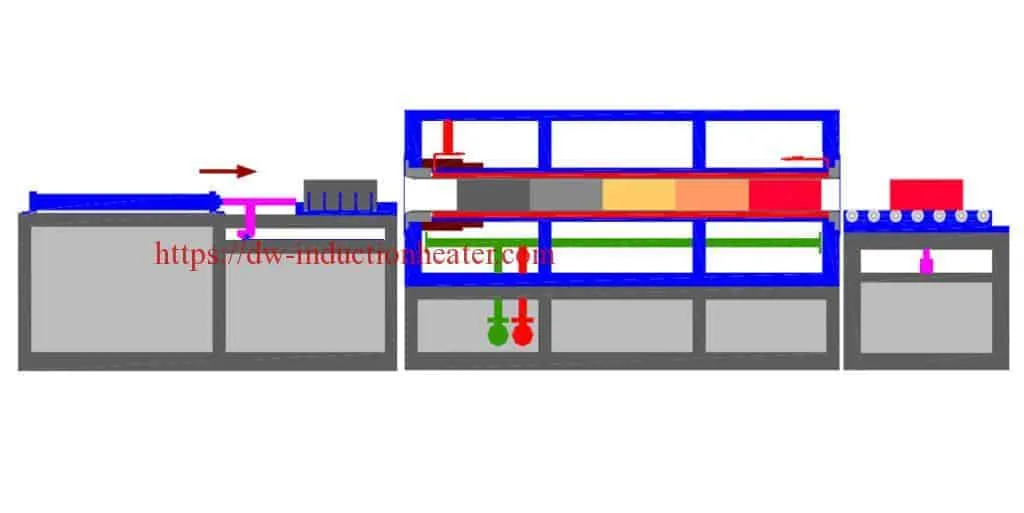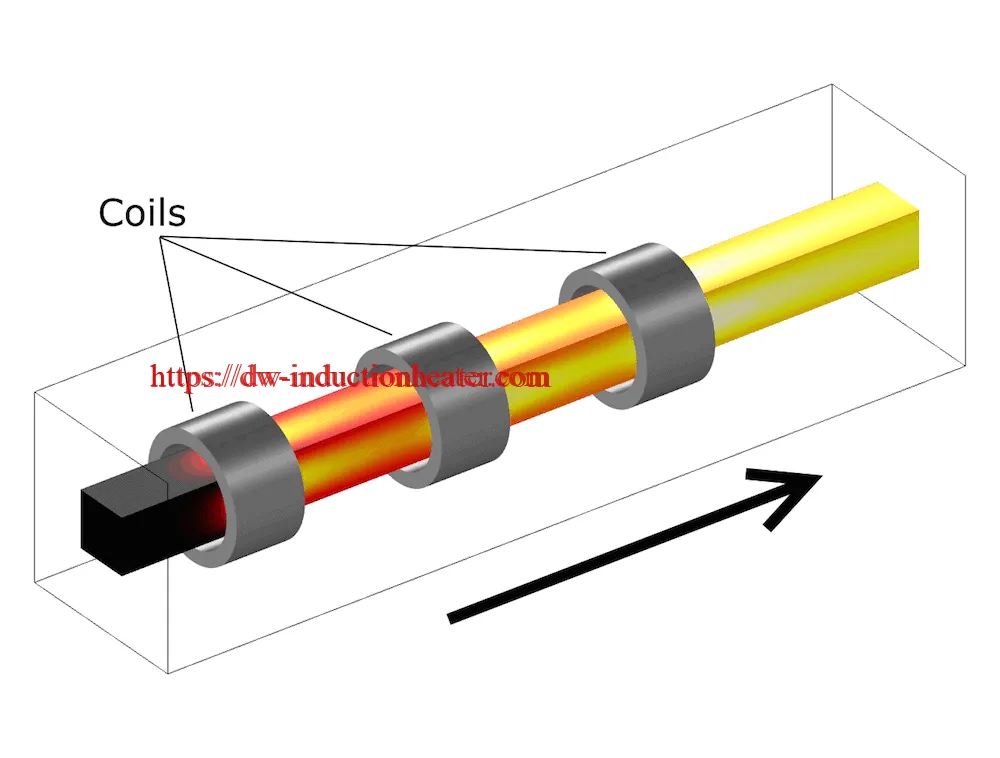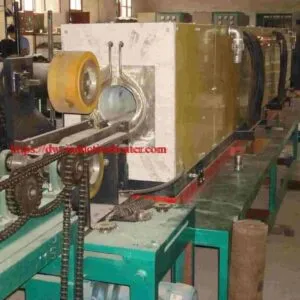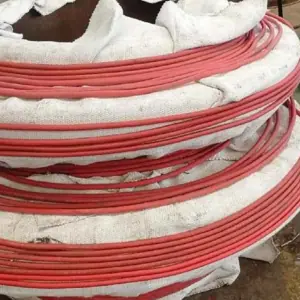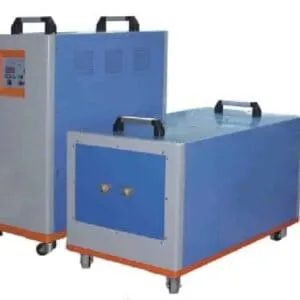-
1/6
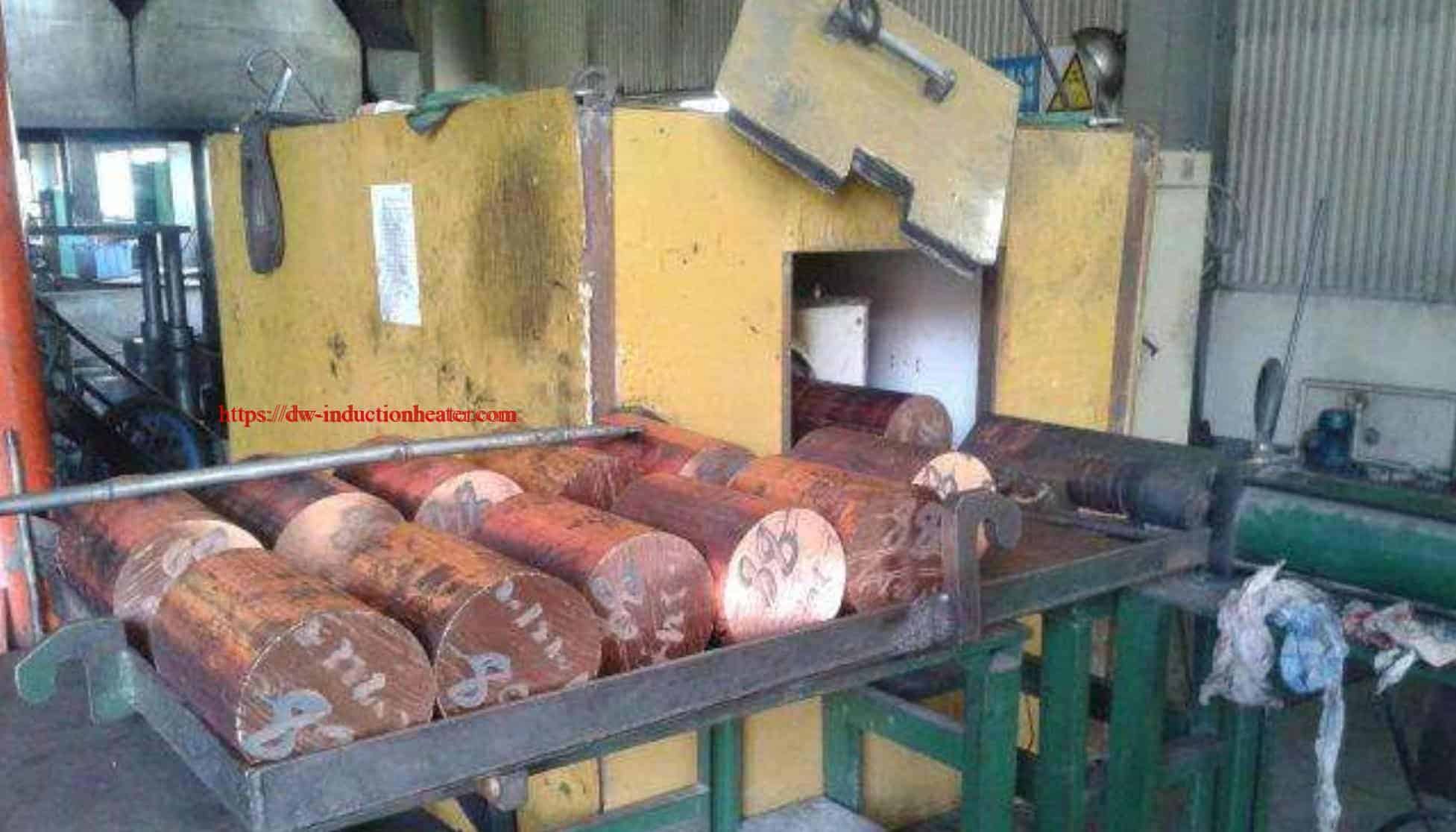
-
2/6

-
3/6
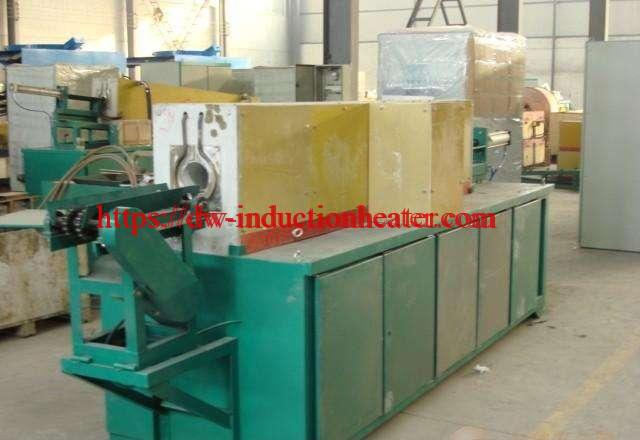
-
4/6

-
5/6

-
6/6
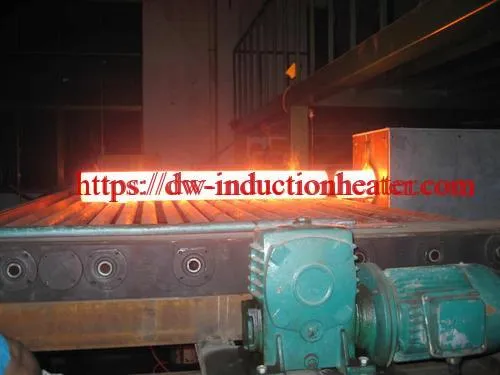
Induction Forge Furnaces for Hot Forming Steel Billets-Copper Bars and Aluminum Rods
Induction Forge Furnaces for Hot Forming Steel Billets, Copper Bars, and Aluminum Rods
Induction forge furnaces are an essential part of modern manufacturing and metalworking processes. These furnaces utilize electromagnetic induction to heat steel billets, copper bars, and aluminum rods with unmatched precision and efficiency for forging and forming operations. Induction heating technology has revolutionized the metalworking industry due to its high energy efficiency, fast heating cycles, and the ability to precisely control the target temperature required for various metallurgical processes. This article delves into the working principles, applications, technical parameters, and benefits of induction forge furnaces designed for hot forming steel, copper, and aluminum with power ranges from 80kW to 1000kW.
How Induction Forge Furnaces Work
Induction forge furnaces operate based on the principle of electromagnetic induction. A high-frequency alternating current (AC) flows through a copper inductor coil, generating a magnetic field. When a metal billet, bar, or rod is placed inside this magnetic field, eddy currents are induced within the material, causing rapid heating. This non-contact and uniform method of heating ensure the material reaches the desired temperature while maintaining metallurgical properties, making it ideal for hot forming processes such as forging, extrusion, and rolling.

Applications of Induction Forge Furnaces
Induction forge furnaces are highly versatile and widely used in numerous industries, including:
- Steel Industry: For pre-heating steel billets before forging into automotive parts, tools, and structural components.
- Copper Processing: Used for heating copper bars for extrusion processes, electrical applications, or plumbing components.
- Aluminum Industry: Ideal for heating aluminum rods for extrusion or forging applications used in aerospace, construction, and transportation.
Key Processes Supported by Induction Forge Furnaces:
- Upset forging
- Closed-die forging
- Open-die forging
- Coining and pressing
- Extrusion
- Piercing and heading
Advantages of Induction Forge Furnaces
- High Efficiency: Direct heating of the workpiece minimizes energy losses.
- Fast Start-Up: Instant-on capabilities reduce downtime and energy consumption.
- Precise Temperature Control: Induction heating enables controlled and consistent heating, ensuring uniformity and minimizing scrap rates.
- Environmentally Friendly: Emits no harmful gases, making it a greener heating solution.
- Cost Savings: High efficiency reduces operational and energy costs over time.
- Improved Material Properties: Uniform heating prevents cracking, uneven hardness, and other defects during forging.
Technical Parameters for Different Metals
Steel Billet Heating Parameters
| Parameter | Small Systems (80-250kW) | Medium Systems (250-500kW) | Large Systems (500-1000kW) |
|---|---|---|---|
| Operating Frequency | 500-3000 Hz | 300-1000 Hz | 150-600 Hz |
| Heating Capacity | 100-300 kg/hr | 300-800 kg/hr | 800-2500 kg/hr |
| Temperature Range | 900-1250°C | 900-1250°C | 900-1250°C |
| Typical Billet Size | Ø30-100mm | Ø80-180mm | Ø150-300mm |
| Power Density | 2-4 kW/kg | 1.5-3 kW/kg | 1-2.5 kW/kg |
| Heating Time | 1-5 min | 3-8 min | 5-15 min |
| Energy Consumption | 350-450 kWh/ton | 300-400 kWh/ton | 280-380 kWh/ton |
| Cooling Water Requirements | 15-40 m³/hr | 40-80 m³/hr | 80-160 m³/hr |
Copper Bar Heating Parameters
| Parameter | Small Systems (80-250kW) | Medium Systems (250-500kW) | Large Systems (500-1000kW) |
|---|---|---|---|
| Operating Frequency | 800-5000 Hz | 500-2000 Hz | 300-1000 Hz |
| Heating Capacity | 150-400 kg/hr | 400-1000 kg/hr | 1000-3000 kg/hr |
| Temperature Range | 700-950°C | 700-950°C | 700-950°C |
| Typical Bar Size | Ø20-80mm | Ø60-150mm | Ø120-250mm |
| Power Density | 1.5-3 kW/kg | 1.2-2.5 kW/kg | 1-2 kW/kg |
| Heating Time | 0.8-3 min | 2-6 min | 4-10 min |
| Energy Consumption | 280-380 kWh/ton | 250-350 kWh/ton | 230-320 kWh/ton |
| Cooling Water Requirements | 15-40 m³/hr | 40-80 m³/hr | 80-160 m³/hr |
Aluminum Rod Heating Parameters
| Parameter | Small Systems (80-250kW) | Medium Systems (250-500kW) | Large Systems (500-1000kW) |
|---|---|---|---|
| Operating Frequency | 1000-8000 Hz | 800-3000 Hz | 500-2000 Hz |
| Heating Capacity | 180-500 kg/hr | 500-1200 kg/hr | 1200-3500 kg/hr |
| Temperature Range | 400-550°C | 400-550°C | 400-550°C |
| Typical Rod Size | Ø20-80mm | Ø60-150mm | Ø120-250mm |
| Power Density | 1.2-2.5 kW/kg | 1-2 kW/kg | 0.8-1.8 kW/kg |
| Heating Time | 0.5-2 min | 1.5-4 min | 3-8 min |
| Energy Consumption | 220-300 kWh/ton | 200-280 kWh/ton | 180-260 kWh/ton |
| Cooling Water Requirements | 15-40 m³/hr | 40-80 m³/hr | 80-160 m³/hr |
System Components and Technical Specifications
Power Supply System
| Component | Specification | Notes |
|---|---|---|
| Input Voltage | 380-480V, 3-phase | Higher voltages available for large systems |
| Input Frequency | 50/60 Hz | Grid standard |
| Power Factor | 0.92-0.98 | With power factor correction |
| Efficiency | 85-95% | Conversion efficiency |
| Cooling Method | Water-cooled | Closed-loop deionized water system |
| Control Interface | PLC with HMI touchscreen | Industry 4.0 compatible |
| Protection Class | IP54 (control cabinet) | Higher protection available |
Induction Coil Specifications
| Parameter | Steel Billets | Copper Bars | Aluminum Rods |
|---|---|---|---|
| Coil Material | Copper tubing | Copper tubing | Copper tubing |
| Coil Cooling | Pressurized water | Pressurized water | Pressurized water |
| Coil Design | Multi-turn helical | Multi-turn helical | Multi-turn helical |
| Insulation | Ceramic/refractory | Ceramic/refractory | Ceramic/refractory |
| Coil Lifespan | 8,000-15,000 hours | 10,000-18,000 hours | 12,000-20,000 hours |
| Coupling Efficiency | 70-85% | 75-90% | 80-92% |
 Cooling System Requirements
Cooling System Requirements
| Power Rating | Water Flow Rate | Heat Exchanger Capacity | Pump Power | Water Quality |
|---|---|---|---|---|
| 80-250kW | 15-40 m³/hr | 70-220kW | 3-7.5kW | <20μS/cm conductivity |
| 250-500kW | 40-80 m³/hr | 220-450kW | 7.5-15kW | <20μS/cm conductivity |
| 500-1000kW | 80-160 m³/hr | 450-900kW | 15-30kW | <20μS/cm conductivity |
Material-Specific Considerations
Steel Billet Processing
Steel billets typically require the highest processing temperatures among common metals, reaching 1200-1250°C for hot forming operations. The magnetic properties of steel below the Curie point (approximately 768°C) significantly affect the induction heating process:
- Initial heating phase: Lower efficiency due to magnetic properties
- Above Curie point: Efficiency improves as steel becomes non-magnetic
- Temperature uniformity: Critical for preventing defects in formed products
- Typical applications: Forging, rolling, extrusion, and wire drawing
Copper Bar Processing
Copper’s high electrical conductivity presents unique challenges for induction heating:
- Higher frequencies required for effective heating compared to steel
- Excellent thermal conductivity aids temperature uniformity
- Typical processing temperatures: 700-950°C depending on alloy composition
- Oxide formation must be minimized through protective atmospheres or rapid processing
- Common applications: Extrusion, rolling, and forging for electrical components
Aluminum Rod Processing
Aluminum requires careful temperature control due to its relatively low melting point:
- Precise temperature control essential to prevent melting (660°C for pure aluminum)
- Typical processing temperatures: 400-550°C
- Higher frequencies required due to aluminum’s electrical conductivity
- Rapid heating possible due to lower heat content requirements
- Applications: Extrusion, forging, and drawing for automotive and aerospace components
Control Systems and Automation
Modern induction billet heaters incorporate sophisticated control systems:
- PLC-based control with touchscreen HMI interfaces
- Pyrometer-based temperature measurement and feedback control
- Automatic power adjustment based on material properties and sizes
- Recipe management for different alloys and product dimensions
- Data logging and quality assurance reporting
- Remote monitoring and integration with plant management systems
- Predictive maintenance capabilities
Energy Efficiency Considerations
| System Size | Power Consumption | Energy Efficiency | CO₂ Reduction vs Gas Heating |
|---|---|---|---|
| 80-250kW | 70-225kW effective | 75-85% | 30-40% |
| 250-500kW | 225-450kW effective | 80-88% | 35-45% |
| 500-1000kW | 450-900kW effective | 82-90% | 40-50% |
Conclusion
Induction forge furnaces offer fast, clean, and energy-efficient heating of steel billets, copper bars, and aluminum rods for hot forming applications. The wide power range—from 80 kW to 1,000 kW—covers both small-scale workshops and large industrial facilities, ensuring that users can find solutions that precisely match their throughput and material requirements. With significant benefits such as rapid heating rates, excellent temperature control, and reduced oxidation, induction forge furnaces continue to be indispensable in improving manufacturing productivity and end-product quality across a broad scope of industries.

